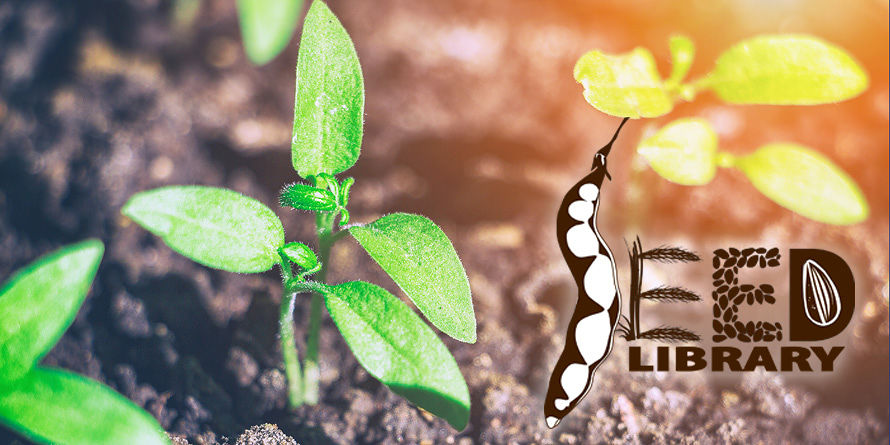In honor of Indigenous Heritage Month, a few of us from the Library’s Many Nations Team are sharing our connections and our stories around the “Three Sisters” relationship: Corn, Beans, and Squash. These Three Sisters have been grown together across the North American continent since our ancestors began cultivating our plant relatives. In some regions, these sisters are grown in the same plot, but here in the Southwest, they are raised separately. To Native and Indigenous peoples’, corn provided a stalk for the bean vines to grow, beans provided essential nutrients within the soil, and squash provided shade and moisture to the earth. Their symbiotic connection as sisters demonstrated a unique form of teamwork and are at the core of many Indigenous foodways. Being unique and diverse ourselves, they’ve all impacted us in rich ways.
Lios Enchim Aniavu, Inepo David teak! I am a Mexican Indian, Opata/Yaqui. I have lived in Southern Arizona my whole life, growing up in Marana by the Yoeme Pueblo. I believe corn is a-maize-ing! Our Seed Library contains several types of corn; check out Painted Mountain to see kernels in every rainbow color! What would the holidays be like without warm corn tamales, atole (made from corn), menudo, and fresh tortillas? Corn has revolutionized the food industry and is a natural, healthy staple. Even the corn products we have today are descendants of the strain of corn cultivated by Native and Indigenous peoples from Mesoamerica up through North America. And let’s remember popcorn is the perfect snack to enjoy watching a movie! Here's a recipe for our famous Yaqui dish, Wakavaki, which includes all Three Sisters.
Osiyo, I’m Kristen! I’m enrolled in the Cherokee Nation and have lived in Pima County for about 20 years. This is my fifth semester working for PCPL as a graduate assistant. I am studying Library and Information Science at the University of Arizona. And I love beans! I've included an excellent recipe for Cherokee Bean Bread. I would also like to encourage our readers to check out the three types of easy-to-grow tepary beans available from PCPL’s Seed Library: Sonoran White, Sacaton Brown, and Cocopah Brown. Cultivated by the Tohono O’odham since time immemorial, tepary beans are happy to be planted in the Sonoran Desert between June and August. Traditionally, O’odham farmers sang the rain down in July and used flood-irrigation to start their tepary beans.
Yáʼátʼééh, my name is Lindsey Curley (Diné), and I am Red House Clan and was born for the Hopi Salt Clan. I am Valencia Library’s new Tween Services Librarian, and it’s exciting to be among you all as you read my words. Squash is considered the protective sister because she provides shade, prevents the growth of weeds, and has prickly stems for any critters looking to “pick on” her other sisters. Since I was a little girl, I’ve had an incredible connection between our traditional foods and familial recipes. Squash, beans, and corn are the Three Sisters who have always been present in our delicious stews. We even adorn ourselves with squash blossom necklaces for her inherent beauty and cultural value. As I write about squash, I think about my mother and her cooking, using these ingredients to convey a love language through her homecooked meals.
Hoping that our PCPL customers cultivate their own relationship with the Three Sisters, we encourage you to explore our wonderful Seed Library, in addition to the resources we’ve provided below. Our seeds are not only diverse in strength and nutrition, but they are especially acclimated to our Sonoran Desert. PCPL has a breadth of knowledge, and we are available for any inquiries you may have.
Visit this page to learn more about the Many Nations team.
Thank you, for reading!
Links Mentioned:
Chiokoe - Wado/sgi - Ahéhee’
Robin Kimmerer’s Braiding Sweetgrass
Cooking with Tall Woman, Food Sovereignty the Navajo Way
Celebrating Modern Recipes of the American Indian, New Native Kitchen
“Wakavaki-Recipe” from the Pascua Yaqui Tribe:
https://www.ticenter.org/wp-content/uploads/2021/02/Wakavaki-Recipe-PDF.pdf
“Chef Kaee Coriz – Calabacitas" recipe:
https://flowerhill.institute/sharing-indigenous-foodways/2021/chef-kaee-coriz-calabacitas
“Three Sister Soup” recipe below on p. 8:
https://www.firstnations.org/wp-content/uploads/2018/11/NIzhonigo-Iina-Recipe-Book-EDITEDpb.pdf
Cherokee “Bean Bread” recipe:
https://food.ebci-nsn.gov/2022/09/27/aggie-rosss-bean-bread-dinner-with-fish-and-greens/


